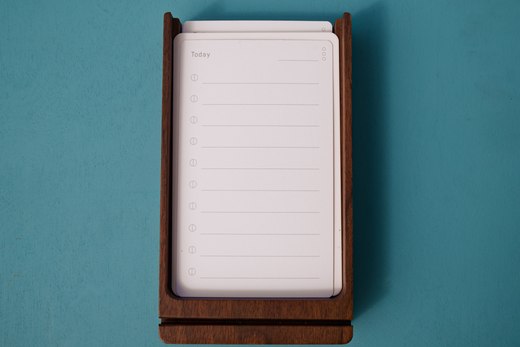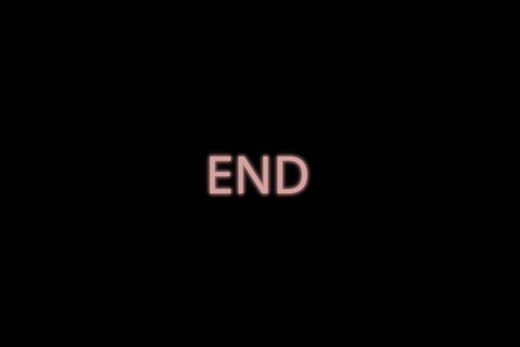Getting Things Done With Notecards
They’re cheap, they’re everywhere, and they work.
I don’t think anything I’ve written for Wired has generated so much interest as a throw away comment I made about notecards in our guide to paper planners. Every time that article is updated I get more email asking for details. Here are the details.
First, lets make sure we’re all on the same page: if you want to accomplish things in life you need to make plans.
Not a plan, a plan is useless. You need plans.
Many plans means you go through the process of planning. That’s what’s valuable, the process. Planning requires thinking deeply about life, your life, and what you’re doing here. What you want to do here, what you were put here to do.
I can’t help you with that part, but after you’ve made some decisions about what you want do do, where you want to go, it’s time to plan how to get there. That requires lists. Lots of lists. Lists of goals, lists of outcomes you’re aiming for, lists of things you need to do to get from here to there, lists of what you did to get from where you were to where you are, and so on.
If you step back a bit, you’ll see that there are several levels of stuff you need to keep track of — long terms goals, shorter term projects aligned with those goals, and day to day stuff you need to accomplish to complete the projects that get you to the goals. Life isn’t nearly this simple or neat, but at a very broad level that’s three things to keep track of: long term things, medium term things, short term things. There’s one more important element: a way to record ideas as they come to you.
I used to use notecards to track day-to-day tasks and to capture ideas. These days I just use them for my daily todo list. Everything else lives in my notebook. I still think notecards are the best todo list though.
The notecard system started when I was in my early 20s and was pretty much spinning my wheels. Working in a restaurant, drinking too much, not sleeping enough, never working out. Living without direction. It’s good for you sometimes, but I think I maybe enjoyed it a little too much and maybe spent a little too much time in this stage, but I digress.
One of my good friends at the time, who lived more or less the same way I did, nevertheless managed to run a successful business, play in a band, and otherwise be a much more effective person than me. All while doing all the same bad things I was doing. I asked him one day how he managed get so much done. “I make a list of all the stuff I need to do,” he said, “then I do it.”
That this was revolutionary to me tells you everything you need to know about me in my twenties. But it was. I asked him, okay, but like, what do you do? It turned out he took whatever paper was handy and wrote down what he needed to do. Then he did it. Naturally I focused on the first part: how he wrote it down. That was the easiest thing to copy. Actually doing stuff? That’s hard.
I wasted a week or so deciding what sort of paper to use for my lists. I chose index cards because they were small, cheap, fit in your pocket, and wouldn’t get mixed up with other paper. The fact that they’re small also meant my todo list would never get to more than ten or so items. That’s manageable.
Finally, paper decision behind me, I started writing things down on index cards. Then I had to do them. That was annoying. But there they were, on the list. Needing to be done. It turned out that crossing stuff off the list was fun. Almost addictive. It was like a game in a way. Could I get everything crossed off in a day? I got moderately obsessed with lists.
One night at sushi with my then-girlfriend and her father (also a very successful person) I happened to mention my notecard system (see, obsessed, as in bringing it up at dinner). “I do that too,” he said. “Every night before I go to bed I write down everything I have to do, and all the extraneous things I’ve been thinking about. I try to completely empty my head. Helps me sleep,” he said.
Notice that he did not say anything about what sort of paper he used. Only idiots like me obsess over paper. Focus on the craft, not the tools.
This idea made sense to me, so I took this craft and incorporated it into my life as well. I didn’t even obsess over what sort of paper to use. I started writing out my todo lists in the evening, along with anything else that felt like it needed to get off my mind, which I also wrote on notecards since I had them around. These cards I threw in a shoe box and, to be honest, didn’t do much with them, but they helped clear my head, which was the important part1.
This system, tracking what I needed to do, and clearing my ideas at the end of the day, was far more powerful than I expected. The notecards themselves are incidental. Use whatever scraps of paper work for you, the point is the craft. The system works. I started getting more stuff done. Lots more stuff. To the point that I ended up going back and finishing college because I realized I had enough time in my day to do that, in part because I knew what I had to do each day.
Over the years I have experimented with other ways of keeping todo lists, including notebooks of various shapes and sizes, probably a dozen different digital methods, including two I wrote myself. None of them stuck. I keep coming back to notecards. They are the single most effective way to keep track of what you need to do without introducing unnecessary complexity.
This is a flexible enough system that I’ve used it as a chef, a computer programmer, a writer, a father, and more. I honestly think it would work for anyone in just about any job where you have to keep track of what you need to do.
-
When I had kids I kind of gave up on this habit to spend my time reading to them before bed. In practice it accomplishes the same thing — it clears my head by sticking a story in it — I just lose whatever ideas might have been rattling around. The only notecards I really use as a filing system anymore are reading notes. ↩




Thoughts?
Please leave a reply:
All comments are moderated, so you won’t see it right away. And please remember Kurt Vonnegut's rule: “god damn it, you’ve got to be kind.” You can use Markdown or HTML to format your comments. The allowed tags are
<b>, <i>, <em>, <strong>, <a>. To create a new paragraph hit return twice.